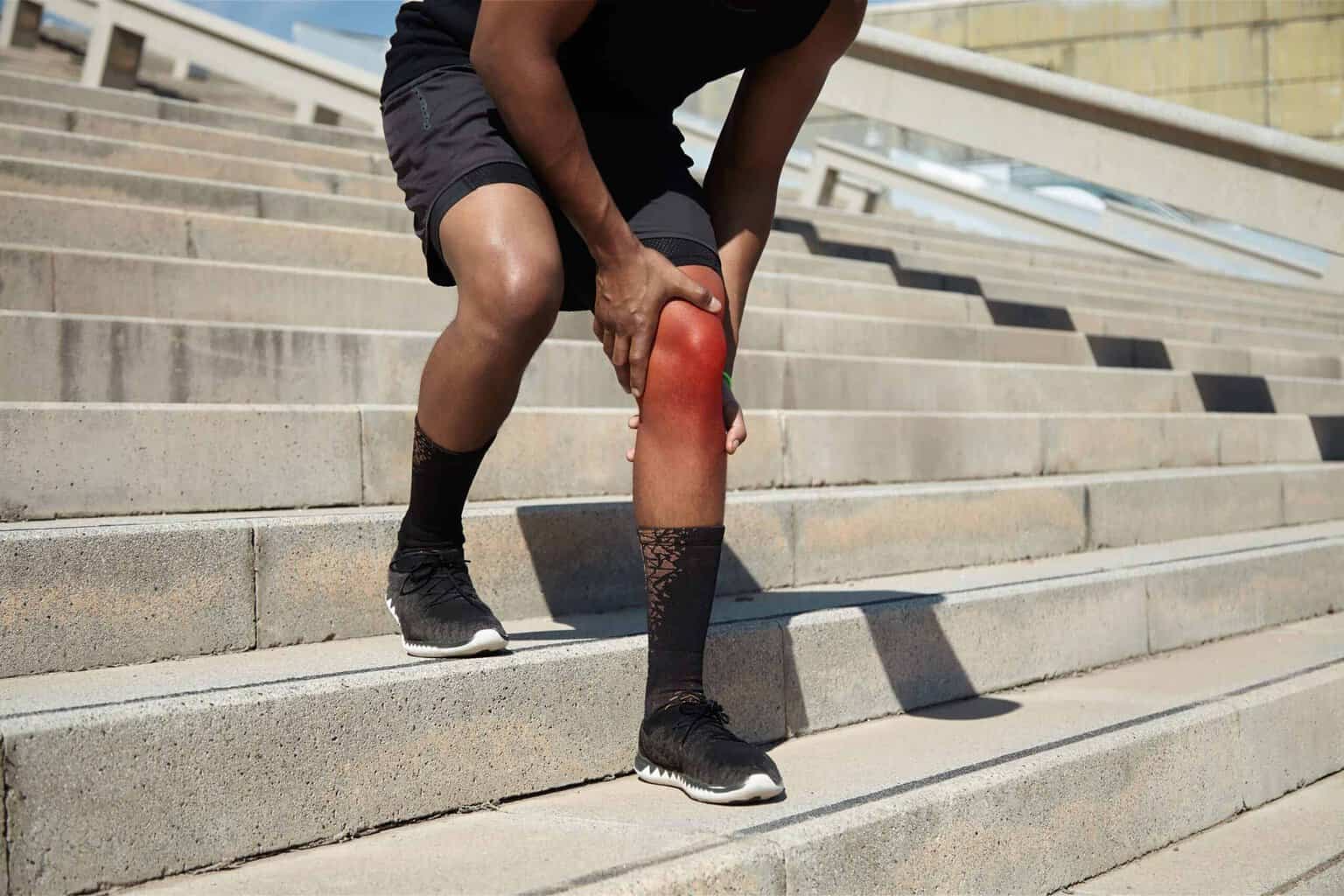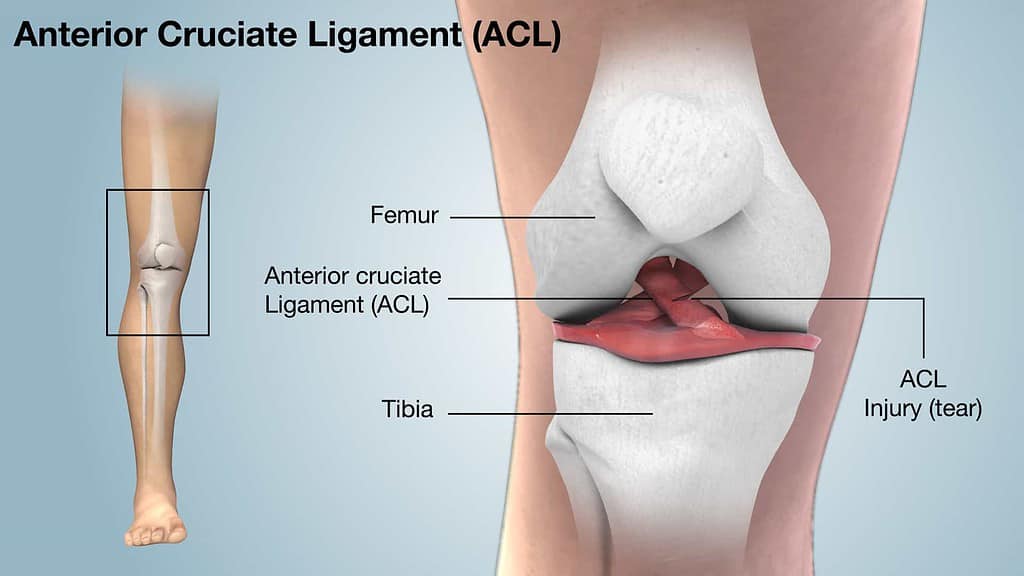ACL Tear: Rehab Pilates

Knee injuries can be excruciatingly painful. One of the most severe injuries is in the ACL, more often than not, which requires surgery to heal. ACL or anterior cruciate ligament runs diagonally in the middle of the knee joint connecting the femur to the tibia. In this blog, we shall discuss a case study of an ACL tear and what rehab it requires.
What is ACL?
Three bones meet to form your knee joint: your thighbone (femur), shinbone (tibia), and kneecap (patella). There are four primary ligaments in the knee, which act like strong ropes to hold the bones together and keep your knee stable. ACL or Anterior Cruciate Ligament is one of these four ligaments.
It prevents the tibia from sliding out in front of the femur, as well as provides rotational stability to the knee. It is assisted in this function by the hamstring, which also pulls the tibia posteriorly. Without the ACL and hamstrings, the tibia will roll off the femur due to the rounded condyles.

ACL Tear
ACL injuries most commonly occur during sports that involve sudden movements such as soccer, basketball, football and downhill skiing. About half of all injuries to the anterior cruciate ligament occur along with damage to other structures in the knee, such as articular cartilage, meniscus, or other ligaments. Partial tears of the anterior cruciate ligament are rare; most ACL injuries are complete or near complete tears.
The ACL can be injured due to an impact like direct contact or collision (e.g., a football tackle) or due to rotation in the knee of the weight-bearing leg while changing direction rapidly, stopping suddenly, or landing incorrectly from a jump.
When you injure your anterior cruciate ligament, you might hear a “popping” noise and you may feel your knee give out from under you. Other typical symptoms include pain with swelling. Within 24 hours, your knee will swell. If ignored, the swelling and pain may reduce. However, if you attempt to return to sports, your knee will probably be unstable and you risk causing further damage to the cushioning cartilage (meniscus) of your knee. ACL tears lead to loss of full range of motion, tenderness along the knee joint and discomfort while walking.
Depending on the severity of your ACL injury, treatment may include rest and rehabilitation exercises to help you regain strength and stability, or surgery to replace the torn ligament followed by rehabilitation. If you are a sportsperson, proper conditioning of the knee is essential and it may help reduce the risk of an ACL injury. Post-injury and post-surgery too, rehab Pilates can make a big difference as you will read below.
Case Study
A few years back, Moiz Kuvawala was kicked in the shin and tore his ACL while playing football. At that time, he had been training for the Mumbai Marathon and did not want to miss it, so he postponed his surgery. To reduce the inflammation and strengthen the hamstrings, Moiz followed an intense Pilates program with Moushu’s Pilates before the marathon. He managed to shave off 11 minutes from his timing even with an injury.
He went for surgery to reconstruct the ACL post that. A part of his hamstring was used to reconstruct the ACL. He says that was an arthroscopic procedure in which they pull out a part of the hamstring muscle fibres and graft it to rebuild the ACL.
Thus, the strength of his hamstring muscles played a major role in aiding his recovery, which had already begun with rehab Pilates pre-surgery.
After the surgery, he couldn’t flex his knee and had some scarring around the arthroscopy. He continued with rehab Pilates with us. Within 3 weeks he could walk and had recovered 100% motion in the knee joint.
Rehab Pilates for ACL
The exercises to prevent ACL injuries and those for rehab are almost the same. For Moiz, and for all our clients, we begin rehab by strengthening the core. Then we moved to hamstring activation, followed by strengthening the quadriceps, glutes and calves. The key is to align the lower chain from the hips, knees and ankle joints. Thus, working on internal and external rotation of the hip is important. Then once the client is stronger, we move to balance work on a single leg and finally to jumping and pulsing movements on the legs.
Getting functional mobility back in the joint, while reducing pain and strengthening the connected muscles speeds up the recovery.
To check out some of these exercises, watch the video below. We conduct personalized rehab sessions at all our studios. Contact us now.
